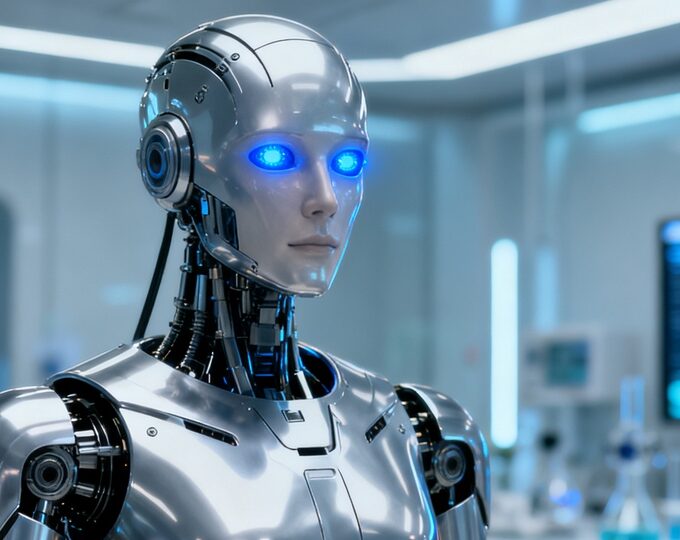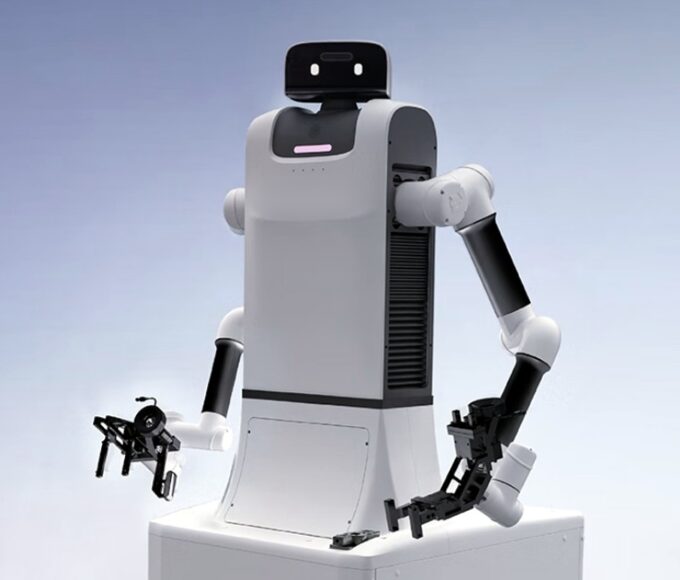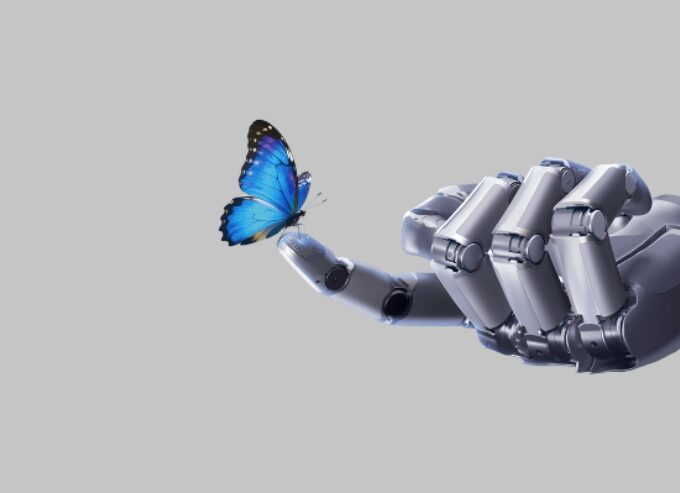On April 19, the world witnessed its first-ever “human-robot joint” half marathon in Beijing. This extraordinary event brought over 10,000 human runners and 20 humanoid robots onto the same 21.0975 km track—an unprecedented spectacle blending steel and flesh in a celebration of athleticism and innovation. The spotlight ultimately fell on the “Tiangong” robot, developed by the Beijing Humanoid Robot Innovation Center, which took first place with a time of 2 hours, 40 minutes, and 42 seconds.
The race wasn’t short on charm. A 75-cm-tall robot cheerfully waved and “flirted” with the crowd while running, winning hearts with its playful personality. One robot lost its head mid-race—literally—but continued running headless, showing a surprising level of persistence. Meanwhile, the only “female” robot staged an instant strike, refusing to move from the starting line, drawing laughs from the crowd. These moments quickly spread online, sparking widespread discussions and bringing attention to this quirky and challenging competition.
The Challenge: Marathon Hardships for Robots
For humanoid robots, finishing a half marathon is a technical and physical gauntlet. Unlike humans, who instinctively coordinate their balance, posture, and stride through muscle memory and reflexes, robots rely entirely on algorithms. Each movement must be precisely calculated and dynamically adjusted, especially when facing hills, slopes, and turns.
For example, climbing requires increased torque from leg joints and a forward shift of the robot’s center of gravity. Turning demands both precise leg movement and coordinated body tilt to maintain balance—tasks humans do intuitively, but robots must compute in real time, often across hundreds of joints.
Heat dissipation poses another challenge. Intense activity causes joint components to heat up rapidly. Without proper cooling, core components can overheat and fail. Tiangong’s designers tackled this by using lightweight, high-strength materials to reduce load without sacrificing durability. The robot’s joints were equipped with high-conductivity materials and active air-cooling systems to keep temperatures within operational range.
Battery life is another hurdle. The full race distance easily outpaces a standard battery’s capacity. Some teams resorted to swapping batteries every 5 km. Others focused on higher-density batteries and intelligent energy management systems to maximize endurance without adding excess weight.
The Breakthrough: Innovation Driven by Competition
This marathon pushed the limits of robotics, demanding millimeter-level precision and millisecond-level response. Real-world environments like this race reveal far more than a lab ever could, turning competition into a powerful incubator for technological breakthroughs.
For example, obstacle avoidance requires increasingly accurate environmental sensing. Advanced 3D vision sensors paired with precise image recognition algorithms helped robots identify objects in their path and react in time. Smooth, human-like motion required continual refinement of motion control algorithms to reduce energy loss and improve running posture.

The Industry Shift: A Catalyst for Intelligent Manufacturing
The robot marathon catalyzed industrial progress. It showcased the strength of China’s domestic robotics industry and exposed technical bottlenecks that spurred collaboration across the supply chain. From component manufacturers to AI developers and system integrators, the entire intelligent manufacturing ecosystem received a boost.
Battery limitations, for instance, are driving R&D in high-efficiency power cells. Motion control shortcomings are encouraging deeper investment in robotics algorithms. Since the event, multiple core component companies have reported a 30–50% increase in orders compared to the previous year, clear evidence of the event’s market-driving effect.
The Meaning: What Human-Robot Racing Represents
More than just a race, this event represents a shift in how society imagines the future. Humanoid robots are beginning to move beyond the factory floor into public and service-oriented domains. With running capabilities, robots could one day play critical roles in emergency response, navigating disaster zones, and delivering aid swiftly in situations like earthquakes and fires.
In communities, robots might become smart assistants, delivering essentials to the elderly or disabled. Their growing presence and public enthusiasm for robot competitions also accelerate societal understanding and acceptance of artificial intelligence, paving the way for more robust ethics and regulatory frameworks.
Still, robots remain clunky runners. Their energy efficiency and agility pale in comparison to humans. While people intuitively manage their energy over long distances, robots still consume excessive power and lack the coordination to perform complex maneuvers like dodging or jumping obstacles smoothly. These limitations remind us to approach progress realistically and avoid overhyping human-machine competition. Technological advances must follow natural development patterns, grounded in research and fostered through collaboration across academia, industry, and government. The Japan Times noted that the world’s first humanoid robot half marathon showcased China’s strength in leading the global race in cutting-edge technology. As robots play an increasingly significant role in daily life, guiding the public toward a proper understanding of human-robot relations will become a challenge the entire world must address.
Looking Ahead: A Vision for Robotic Sports
This inaugural humanoid robot half-marathon is just the beginning. As technology evolves, future robot races will likely grow in scale and professionalism. International teams may soon join, turning it into a global arena for robotic competition.
Rules and standards will also evolve, tailored specifically to robot capabilities, ensuring fair and meaningful contests. New race formats may emerge, such as obstacle courses or relay races, to test a broader range of robotic functions. Augmented reality (AR) or virtual reality (VR) could further enhance the spectator experience, bringing immersive viewing to fans worldwide.
The sound of the starting pistol for this historic robot marathon was more than a ceremonial moment—it was a milestone marking the progress of robotics, and a call to advance. Victory isn’t measured by rankings, but by how far we’ve come in transforming robots from sci-fi fantasies into real-world companions. As society continues exploring the intersection of technology and daily life, events like these shape a new narrative for the age of intelligent machines.












